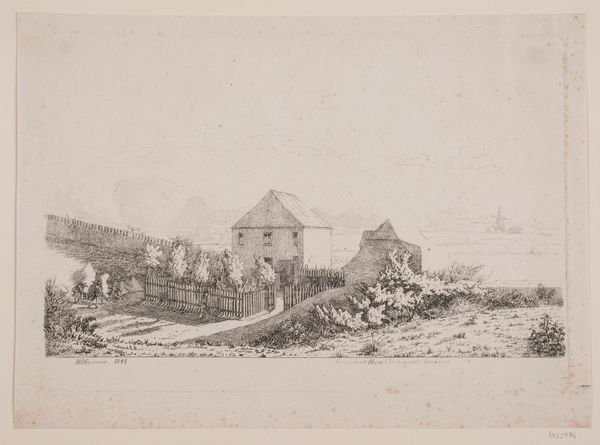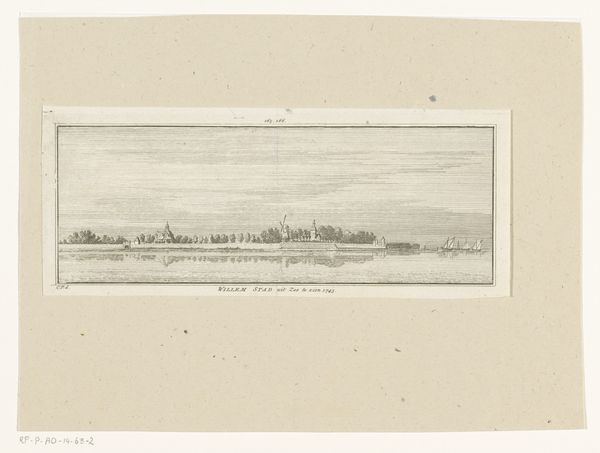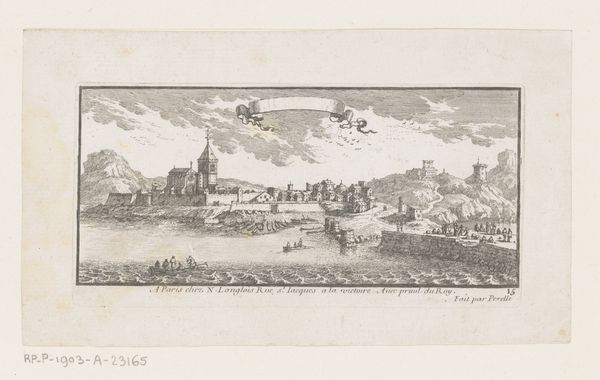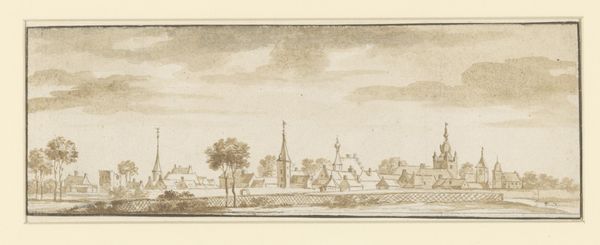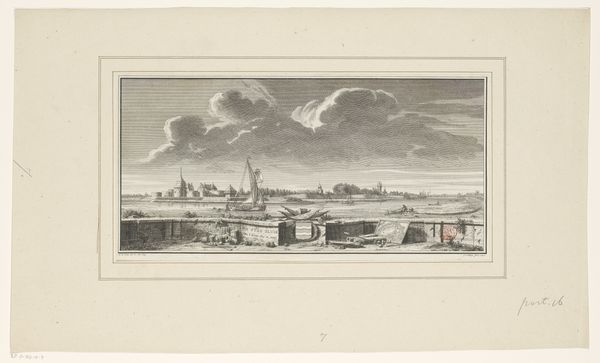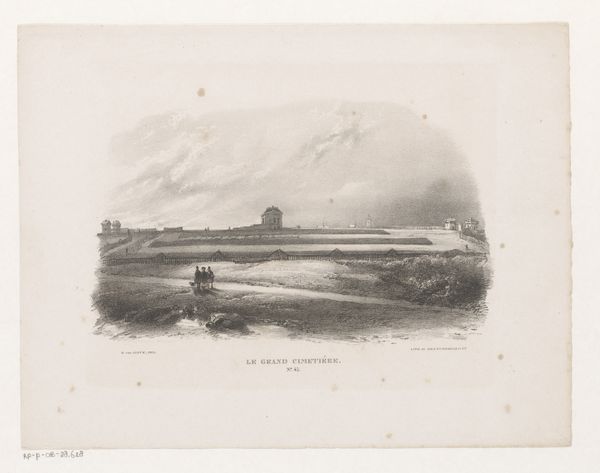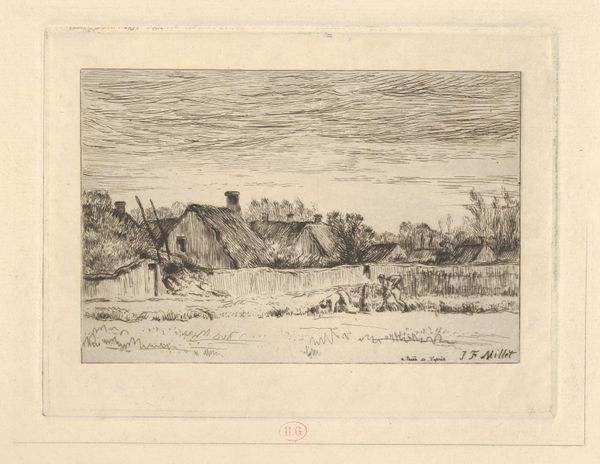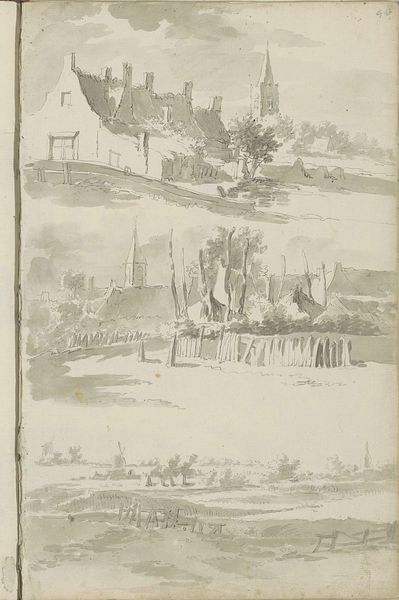
Gezicht op Goes, 1743 / Gezicht op de haven en Westerschans te Goes, 1743 1743 - 1753
0:00
0:00
drawing, print, etching, engraving
#
drawing
#
baroque
#
dutch-golden-age
# print
#
etching
#
old engraving style
#
landscape
#
perspective
#
line
#
cityscape
#
engraving
Dimensions: height 175 mm, width 207 mm
Copyright: Rijks Museum: Open Domain
Jan Caspar Philips created this print in 1743, using etching and engraving. These techniques involve working directly on a metal plate, incising lines that hold ink. The character of the etched and engraved line is entirely distinctive – think of the crispness and precision of a banknote, and you get a sense of it. But unlike a banknote, this print captures a specific place: the port of Goes, in the Netherlands. Philips has carefully depicted the built environment, boats, and people that animate the scene. The architecture is described in exquisite detail, with lines closely packed to describe shadow and texture. Note the contrast between the man-made and natural elements, and the artist's sensitivity to both. Ultimately, the print is a document of a particular time and place, made possible by the reproducible nature of the medium. It's a reminder that all images are made, and that their materials and methods have a profound influence on how we see the world.
Comments
No comments
Be the first to comment and join the conversation on the ultimate creative platform.
